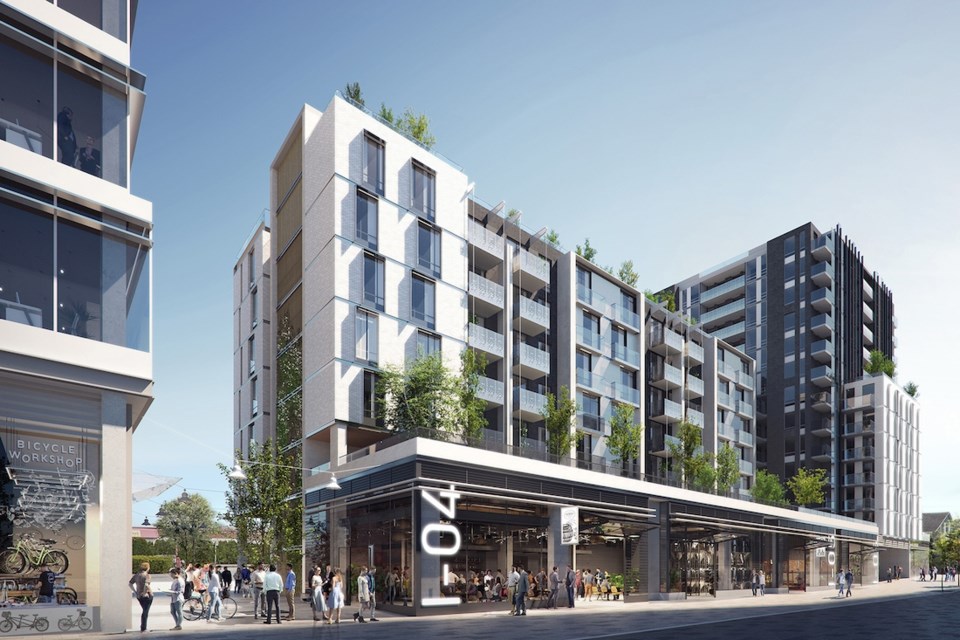New purpose-built rental buildings are facing the highest vacancies rates as overall vacancies for multi-family rentals in 2020 posted the highest increase in more than 20 years, according to Canada Mortgage and Housing Corp’s (CMHC) annual rental report.
While the Metro Vancouver vacancy increased from 1.1 per cent in October 2019 to 2.6 per cent in October of last year, the vacancy rate for new purpose-built rental buildings completed since 2015 spiked to 6.2 per cent, the report found.
In the City of Vancouver, the vacancy rate for new rental buildings soared from 1.4 per cent to 8.7 per cent, year-over-year.
“Newer structures in central areas drove the increase in the vacancy rate, while vacancy rates decreased in suburban markets,” CMHC noted. Vacancy rates were particularly high in new high-rise rental buildings with 200 or more units.
The study also noted that, after a surge of completions in 2019, starts of new rental buildings dropped 23 per cent through the first nine months of 2020 compared to a year earlier.
Meanwhile, vacancy rates decreased in suburban markets with lower rents, a trend that also extended to tighter rental market conditions in cities such as Abbotsford and Mission, the report said.
“These regional differences in the vacancy rate are consistent with the findings in other large Canadian centres such as Toronto and Montreal, where demand has shifted away from downtown cores to more outlying areas and neighbouring cities,” the report said.
Metro Vancouver vacancy rate by bedroom type and corresponding rental rate were as follows:
• Bachelor, 2.9 per cent, with average rent of $1,258 per month
• One-bedroom, 2.5 per cent ($1,415)
• Two-bedroom, 2.7 per cent ($1,792)
• Three bedrooms or more, 3.6 per cent ($2,026)
Despite the increase in the vacancy rate, the report notes the challenges that still face renters, noting only 0.2 per cent of rental stock in the region would be affordable to households earning $25,000 or less per year.
Households earning $47,000 or less per year could afford 23.9 per cent of what’s available on the market, said the report, noting only 12 per cent have bedrooms, highlighting further challenges for families in those income ranges.
“While the overall rental market loosened somewhat in 2020, these results reinforce that significant imbalances and pressures remain, particularly for lower income renter households,” the report said.
"Affordable" is considered a person or household spending no more than 30 per cent of their income on housing.
In Vancouver, the report said the pandemic has had an influence on decreased demand for rental homes. The drop in demand is attributed to job loss among younger people and workers in service industries, both of whom disproportionally rent.
“These impacts remain ongoing,” the report said.
“While seasonally-adjusted employment among the 15-24 age group had partially recovered over the summer, it began to decline again in the fall. Facing unemployment or disrupted incomes, affected tenants may have chosen to combine households or relocate to lower priced accommodation, lowering rental demand in central areas with high rents.”
With international borders closed, migration to the Metro Vancouver region has slowed significantly. The report pointed out newcomers, many of whom tend to rent, are responsible for the majority of population growth in the region.
“This impact may, however, be temporary given that the federal government has announced higher immigration targets for the coming years,” the report said.
With post-secondary education moving online, many students, and especially international students, have relocated away from universities or left Vancouver entirely.
In the University Endowment Lands, home to the University of British Columbia, the purpose-built rental apartment vacancy rate increased from 0.4 per cent in 2019 to 13 per cent in 2020.
“The supply of units in this area did not increase during this period, suggesting that this change results purely from a reduction in demand,” the report said.
Other findings of the report:
• The average asking rent for vacant units was 21.4 per cent higher than the overall average rent for occupied units in the Metro Vancouver region.
“This gap suggests that market rents currently faced by prospective tenants continue to see upward pressure following several years of strong demand that raised rents significantly, while tenants remaining in the same unit only face rent increases in-line with the provincially-allowable amount.”
• The “universe of rental apartments” increased by a net 2,388 units in 2020, the highest annual increase among available records since 1990. The increase is a result of the elevated number of new rental units started over the past few years now coming to market.
“However, with rental starts over the first three quarters of 2020 moving 23 per cent lower year-over-year, there is a risk that the current uncertainty around rental demand leads to a gap in rental completions in the coming years.”
• Same-sample average rents for apartment units in the region’s primary rental market increased two per cent overall, down from 4.7 per cent in 2019. Some high rent areas in Vancouver saw rents move lower, namely in English Bay (minus 2.4 per cent) and Kitsilano and Point Grey (minus 1.3 per cent).
• Provincial pandemic response measures limiting rent increases and increased competition between landlords contributed to the slower pace of rent increase.
“Average rents nonetheless increased by more than the provincially-allowable increase, which suggests that landlords, through turnover of long-term tenants, are able to increase rents to market levels that are higher.”
The province of B.C. has frozen rental increases for existing tenants until July 2021, in response to the pandemic.



